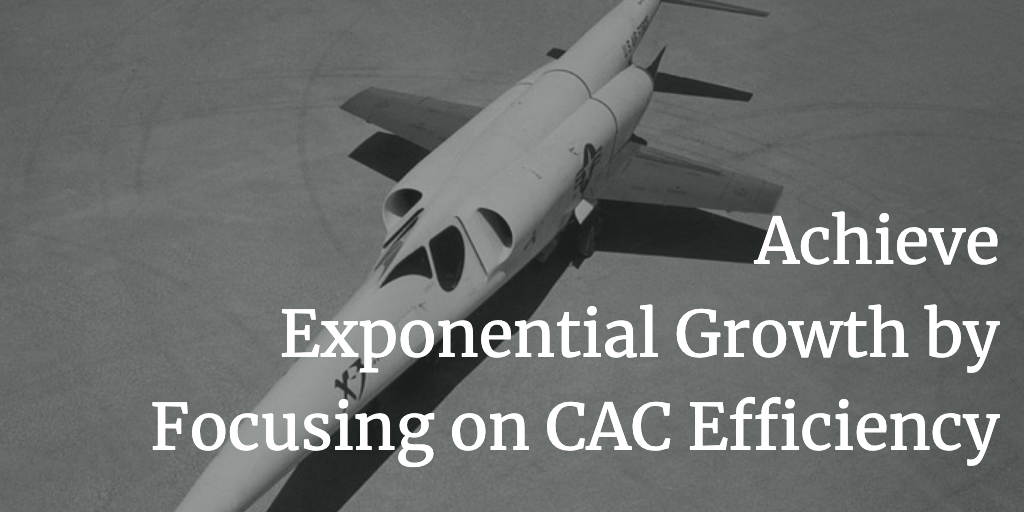 Companies struggling with growth are the ones that try to figure out how to spend as little as possible to acquire customers.
Companies struggling with growth are the ones that try to figure out how to spend as little as possible to acquire customers.
The companies growing like crazy have figured out it’s not about how much you spend, but the efficiency of that spend.
They know that if you can outspend your competition to get in front of prospective customers, you’ll win.
Let’s explore this in more detail.
Outspend Your Competition
If you can outspend your competition to get in front of prospective customers, you’ll win.
Like I said, companies that struggle with growth are the ones that try to figure out how to spend as little as possible to acquire customers.
But the companies growing like crazy have figured out it isn’t about spending as little as possible, but increasing the efficiency of that spend to bring in more revenue, faster.
CAC Efficiency Cranks
So the best companies look for ways to improve the efficiency of that spend, like:
- Decreasing Sales Cycle Length
- Improving Conversion / Close Rate
- Increasing Initial Contract Value
- Expediting Time to First Value (TTFV; aka Onboarded)
- Reducing time to first Expansion
- Accelerating Adoption Depth and Breadth
- Rapidly Driving Customer Advocacy
If you can convert more customers, faster, AND increase what they pay you initially, you’re on your way to much improved CAC efficiency (something I originally wrote about years ago).
But you can skyrocket the efficiency of your CAC spend by getting the customer to a point of expansion faster.
If you can dramatically increase account value (relatively) quickly after they sign-up, the payback period for the CAC shortens substantially, and you can reinvest that spend in acquiring more customers.
CAC Efficiency Drives Company Value
And remember, CAC Efficiency is one of the things (along with NRR, LTV, TAM, etc.) that investors look at to determine the value of your company.
So not only can this CAC Efficiency worldview be a driver of exponential expansion in your revenue, it will most likely directly impact what that newly increased revenue is multiplied against to determine the value of your company.
Powerful stuff.
CAC Payback Period Misconceptions
So what about that popular notion that a good benchmark for paying back CAC is 1/3 of the customer lifetime?
That popular myth that if the average customer lifetime is 3 years, and we pay back our CAC in 1 year, we’re good… What’s up with that?
Well, that’s nonsense that, if you pay attention to it, will probably cause you to go out of business.
You must pay back your Customer Acquisition Cost (CAC) as fast as you can (relative to many things, including cash flow), otherwise you might win at getting your prospect’s attention… but you might run out of money in the process.
So back to that “CAC Payback period of 1/3 customer lifetime” thing… it was simply MARKETING put out by a Venture Capital (VC) firm to improve their deal flow of companies they could invest in AT A DISCOUNT.
They knew they could come in, invest money and resources, and pull a few levers to accelerate CAC Efficiency, and take a company with poor unit economics and make it substantially more valuable.
They said (paraphrasing), “if you pay back your CAC in 1/3 the average lifetime, come to us… we’d love to invest in your company” because they would be able to pay LESS for the equity in the company than if the company already had super-efficient CAC spend.
Remember kids, if a VC says it publicly, it is marketing… either to improve/accelerate deal flow and/or improve/accelerate fundraising. Period.
Get your CAC Efficiency in check and investors will pay MORE for the equity in your company.



